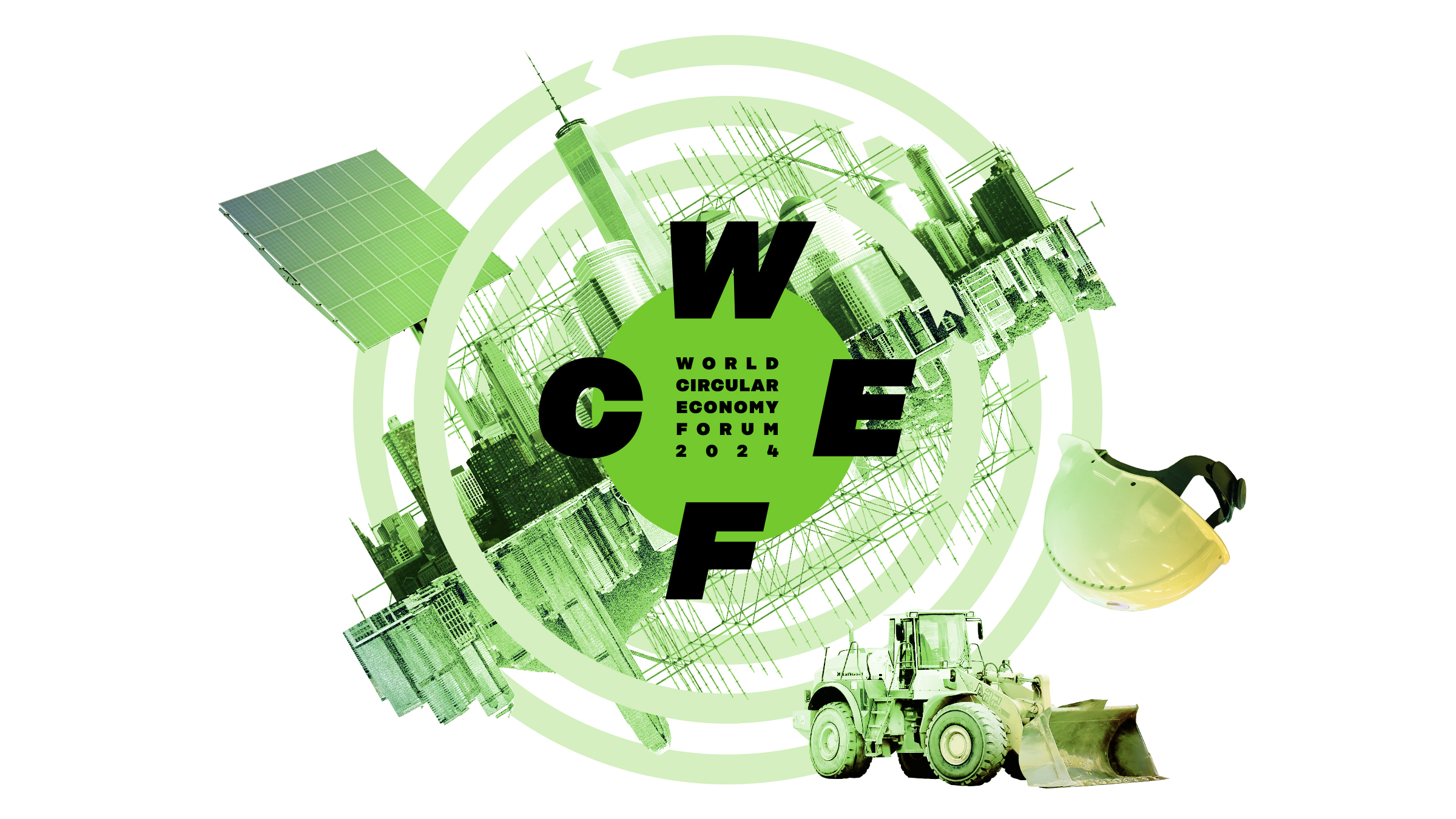The green transition, driven by the global push to decarbonise our economies, is a significant megatrend that requires major shifts in energy sourcing, storage, and use. It creates an overall less extractive electrified economy, but it will also require new materials and additional mining.
The EU’s Critical Raw Materials Act (CRMA), adopted in December 2023, aims to reduce the bloc’s reliance on imports from third countries, by promoting self-sufficiency and resilience through the circular economy. By keeping materials in the economy, increased circularity can tackle supply risks related to critical raw materials. Read more about this and concrete measures for advancing the CRMA’s objectives in a Sitra-funded Institute for European Environmental Policy project.
In support of the report briefing, which was published at the World Circular Economy Forum 2024 in Brussels on 17 April, we have further analysed the topic and compiled answers to ten of the most commonly asked questions.
1. What are the fastest growing materials categories today?
According to the 2024 Global Resources Outlook, resource use grew by 255% between 1970 and 2024, and it is expected to grow by nearly 60% by 2060, as the global population grows, becomes more urban and more affluent. Non-metallic minerals, notably sand, gravel and limestone used in construction, have been and will continue to be the fastest-growing category of materials, while the relative shares of fossil fuels and biomass have been declining. In absolute terms, however, the use of fossil fuels is expected to start shrinking this decade (pdf), while biomass use is expected to increase.
Metals, on the other hand, have consistently accounted for about 10% of material extraction. However, in some countries, such as China and India, metals are the fastest-growing category. High-income countries such as Finland may no longer need such large volumes of bulk metals such as iron, but instead other metals for renewable energy and electrification, many of which are small in quantity but are growing fast because they are vital for the green transition.
2. Which materials are most critical for the green transition?
The raw materials needed in clean energy supply chains differ markedly from those in fossil fuel chains. In particular, there is a greater reliance on numerous critical minerals, that is a material that is economically important and associated with a supply risk.
Batteries today use lithium, cobalt, manganese, nickel and graphite. Rare earth elements such as neodymium and praseodymium are also critical, for example in magnets used in wind turbines and electric vehicles. Copper – needed in electricity grids – accounted for 70% of the total consumption of critical minerals (pdf) for clean energy in 2021. Bulk metals such as steel and aluminium are also needed, for example in wind turbines and solar panel frames.
Currently in Europe (pdf), the ICT, aerospace and defence sectors combined still consume more critical materials than renewable energy and electric mobility – but this could change as the green transition progresses. If the world were to achieve net zero emissions by 2050, clean energy technologies and their infrastructure would account for almost 90% (pdf) of the total consumption of lithium and about half of nickel, cobalt, copper and neodymium consumption by 2030.
The EU has compiled a list of the minerals deemed most critical for the Union and its Member States.
3. What is the projected demand for metals and minerals associated with the green transition?
The International Energy Agency (IEA) has assessed the demand for key materials under different scenarios. If the world were to achieve net zero emissions by 2050, this would nearly double the total global annual demand for critical minerals by 2050. This includes about 60 % more copper, twice as much nickel and neodymium, three times as much cobalt and a whopping 13 times more lithium than in 2021. Bulk materials such as steel, cement and aluminium are still required in large volumes, but their combined demand in the scenario falls slightly due to increasing materials efficiency. There is, however, considerable variation between the scenarios, and the growth rate will ultimately depend on the pace of the green transition and the development and uptake of new innovations.
4. How does this projected demand translate into new mining projects?
There are currently some 25,000 operational mines and exploration sites supplying everything from coal to metals and other minerals, although estimates vary. Green transition metals account for a relatively small proportion of all mining sites. For the four metals cobalt, copper, lithium and nickel, there are about 500 mines in operation.
The scope for increasing production at today’s existing mines is limited. Therefore, most of the imputed increase in minerals would rely on new mines. The IEA estimates (pdf) that by 2030, over 70 new average-sized mines will be needed for lithium and nickel, 30 for cobalt and 80 for copper, implying that demand outstrips the anticipated supply from planned projects. Many rare earth elements are also sourced as by-products from other metal deposits, and the volumes of these elements are difficult to quantify in advance.
Overall, clean energy technologies require fewer materials than the fossil fuel system. The Energy Transitions Commission has estimated that by 2050 clean energy technologies will require 0.3 billion tonnes of materials each year, compared to 15 billion tonnes of fossil fuels extracted in 2022. Cumulatively, the materials requirements of clean energy by 2050 amount to less than current annual coal consumption. However, the extraction of the required minerals produces up to 13 billion tonnes of waste rock annually.
5. How does mining affect biodiversity?
Mines and their associated infrastructure drive land-use change – the mining sector covers an area the size of South Korea – as well as pollution and water use. Mining tailings stored in dams risk regional environmental disasters if the dams fail, while emerging seabed mining risks setting off complex feedback loops in some of the world’s most poorly understood ecosystems. Beyond mining, processing and refining can also result in local pollution.
The World Economic Forum estimates that mining impacts over a thousand threatened or near-threatened species, compared to 17,030 and 8,030 species for food and agriculture and building and construction, respectively, but the number of new mining sites is growing rapidly, and many of these will be located in biodiversity hotspots such as Brazil and Indonesia, where a large number of species would be affected by even small changes in land use or local pollution. The energy transition material that raises the most ecotoxicity concerns is copper, which is already responsible for the majority of mining’s ecotoxicity impacts (pdf) despite making up less than 5% of global metals production.
Location matters, and in fact half of the mining sector’s potential to reduce the risk of species extinction lies in just 2% of mines globally. Nevertheless, the local impact on nature and people can still be considerable, and it is important to leave the most valuable nature intact, minimise the environmental impacts and restore nature on and around mining sites across the board. This needs to be incentivised by regulators, the downstream value chain and financial institutions. Action to reduce the demand for virgin materials, especially copper, is also key to decreasing the impact on nature.
6. Will we have access to enough materials in time?
As mining projects take several years from planning to operation – from four to seven years for lithium to an average of 17 years for copper – access to minerals could be a problem in the next few years, as demand continues to grow while not enough mines have yet come online. This is not to say that there are not enough minerals, but rather that they cannot be mined fast enough to meet demand.
The IEA has estimated that, without additional projects, the expected supply of copper, nickel, lithium, cobalt and neodymium from existing mines and announced projects will fall short of what is needed by 2030. Lithium has the largest gap at 35%. Supply risks are expected to ease toward the end of the 2030s, as more mines come online and as recyclable material stocks and recycling infrastructure reach scale. To boost supply in the short term, it is important to reduce investment risks – more ambitious targets and policies are needed to create certainty of mineral demand in the near term.
7. Do we have enough minerals to decarbonise our economies?
While the most pressing challenge is that new mining projects will struggle to keep up with the rapid increase in demand, it is important to consider the finite nature of minerals.
The Energy Transition Commission has estimated that the demand for some key materials, namely copper, nickel, cobalt and silver could exceed currently estimated reserves by 2050. Reserves are the stocks of mineral that with current knowledge and technology can be profitably extracted. However, there are sufficient resources of all the raw materials needed and reserves and resources continuously expand as new deposits are discovered and technology develops.
There is significant potential to reduce the material demand via efficiency, recycling and innovation. For example, new generations of batteries are being developed – with more material-efficient technologies and even emerging substitutes that can already do without lithium, nickel or cobalt altogether (in Swedish), relying instead on more abundant materials.
8. What are the geopolitical implications of the transition?
The green transition offers the EU more autonomy in the face of countries wielding fossil-based energy as a weapon, but the green transition also brings new risks. Many minerals come from a few or a single country. Today, China provides the EU with 99% of many rare-earth elements, for which they dominate extraction and refining. As much as 90% of Africa’s mineral supply this decade could come from entities at least partly owned by Chinese firms. China has also introduced so-called “export licenses” of graphite (90% of which is refined in China) to favour Chinese battery firms in Europe while restricting exports to Sweden’s nascent battery industry. Rising trade tensions between the US and China are another threat – also to Europe.
The EU Critical Raw Materials Act would require the EU extract 10%, process 40%, and recycle 25% of its critical raw materials by 2030, while ensuring that no more than 65% comes from a single actor. Free trade agreements could diversify EU supply, but the Nordic countries also have large deposits of cobalt, nickel, lithium, graphite and other critical minerals. Finland is the only country outside of China that refines cobalt, providing 10% of global supply. New high-grade graphite will also come from a mine in Vittangi, Sweden, and from new innovations using lignin. However, for the Act to be implemented, more projects will be needed, in terms of volume and supply the many rare earth elements and other critical materials needed. A new Nordic report shows that many new projects are possible through low-hanging fruit, for example by making use of vanadium from steel smelter slags and tungsten from mobile phones.
9. What contribution can recycling make?
Recycling is crucial to decoupling our dependence on finite mineral resources. Large quantities of bulk metals such as steel, aluminium and copper are already being recycled, but their recycling rates should be further increased, as, for example, only 32% of aluminium is currently recycled. Batteries have been difficult to recycle, but breakthroughs in technologies such as pyrometallurgy and hydrometallurgy already make it possible to recover 95 % of the copper, manganese, cobalt and nickel and up to 75% of the lithium in end-of-life batteries. Northvolt, Fortum and Umicore are among the leading European companies.
Researchers have also recently been able to use bacteria to help separate even miniscule amounts of rather similar rare-earth elements such as neodymium and dysprosium, of which very little is recycled today, and we can expect recycling rates to increase, nascent technologies to develop and recycling infrastructure to come to scale.
However, the green transition largely relies on new, additional materials that are not part of the economy today. We cannot recycle mineral assets we don’t possess, and building the future fleet of electric vehicles will rely on virgin sources for many of the materials needed for as long as the fleet continues to grow. One estimate suggests that recycling begins to play a substantial role only after 2040, as an increasing number of electric vehicles reach their end of life, and that by 2050 recycling will only be able to provide a 28% reduction of virgin materials.
10. Are there other ways to reduce the demand for minerals?
In addition to recycling, we could also get more value from our existing resources in the first place. Reducing the number of cars is key to lowering demand for minerals, as electric vehicles require a significant amount of critical minerals. Car sharing can reduce materials used in transport by 50-70% per passenger-kilometre. Walking, cycling or public transport is even better.
It is also important to encourage the purchase of cars with smaller batteries. The IEA estimates that maintaining, rather than increasing, the current average range of electric cars would enable batteries to be 20-25% smaller than otherwise projected, resulting in a 20% reduction in the critical materials needed to manufacture batteries for electric vehicles. Batteries could also be designed to be modular, allowing them to be swapped for longer journeys. Finally, it is vital to increase energy efficiency and use the energy system more intelligently to avoid peaks in demand.
The eighth World Circular Economy Forum (WCEF) highlights solutions to tackle our societies’ over-dependence on natural resources. WCEF2024 emphasises the circular economy as a key source of future well-being and the premier post-fossil fuel investment frontier. The forum takes place in Brussels, Belgium, from 15 to 18 April and convenes thousands of experts to explore the vast opportunities presented by the circular economy.
Read more:
Sitra: Ilmasto- ja energiakriisien ratkaiseminen vaatii puhdasta energiaa – riittävätkö raaka-aineet?
Energy Transitions Commission: Materials and Resource Requirements for the Energy Transition
European Commission: Commission welcomes political agreement on the CRMA
European Commission: Study on the critical raw materials for the EU
IEA: The Role of Critical Minerals in Clean Energy Transitions
IEA: Energy Technology Perspectives (pdf)
IEA: Energy Policy Review, Finland 2023 (pdf)
International Resource Panel: Global Resources Outlook: 2019 & 2024
Nordic Council of Ministers: Recycling of Critical Raw Materials in the Nordics
Nordic Innovation: The Nordic Supply Potential of Critical Metals and Minerals for a Green Energy Transition
OECD: Improving resource efficiency and the circularity of economies for a greener world




















Recommended
Have some more.